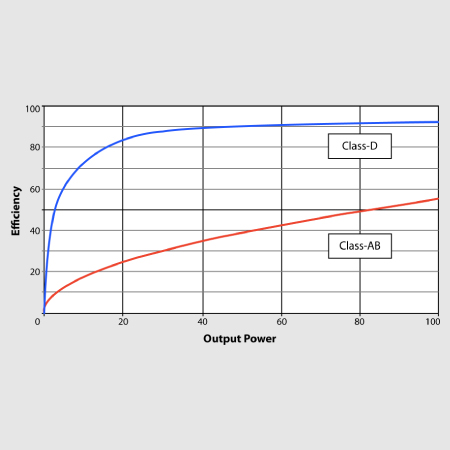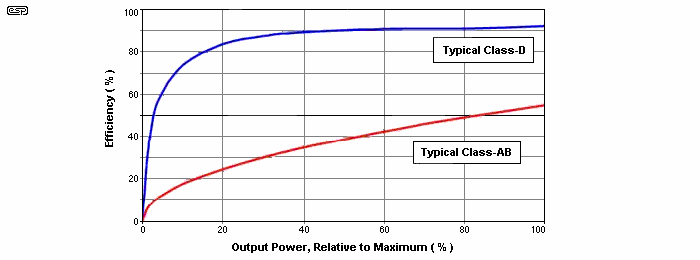class ab vs class d power consumption
By contrast an X1505 channel has that power rating but idles at about 100 watts. Require a lot of power.
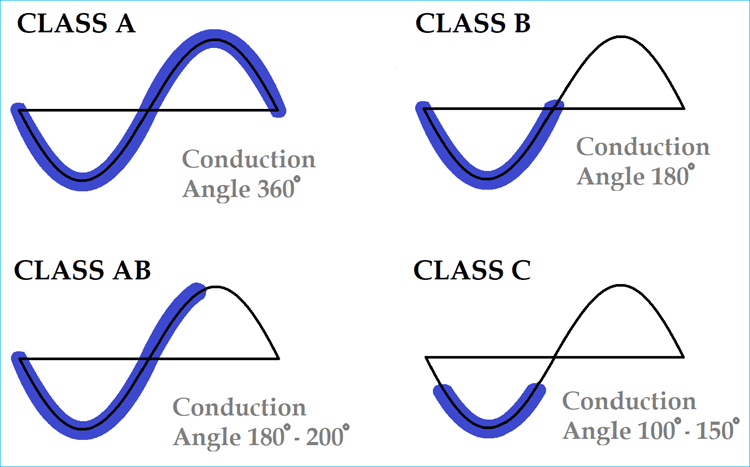
Classes Of Power Amplifiers Class A B Ab C D Amplifiers Explained
Lets say the maximum drive power of both amps is 100 watts per channel.

. Class A conducts all the time because it is biased so. Class D amps really have more in common with switching power supplies than they do with the classic class A B or AB amps. What Class AB does is fill in the gap in the middle of Class B push-pull.
Class D amps are digital. 0125 100 125 watts 20 eff 625 watts x 7 4375 watts. Class A vs.
A Class D topology would look like this. I believe i remember reading somewhere that efficient class ab amps are around 60 efficient at full output and efficient class ds are around 80-84 at full output. Class AB vs Class D.
But even 78 is much better than the Class B and Class A. Class D amplifiers are very efficient around 90 and are actually very good. These are known as Class A and Class AB amplifiers and although both are very popular they have contrasting inner components that impact the amount.
The main drawback of class A amps is their ineffectiveness - they have a theoretical efficiency limit of only 50. Another advantage of the class-D amplifier is. The high performance of an X1505 comes at a price.
So I feel Class AB still seems to make the most sense. Put a good class D and Class AB beside each other with a proper setup and you will not be able to tell the difference. In this case the Class D efficiency is reduced to 78from 90 at higher power.
Class AB power dissipation rises as amplifi er out-put power increases and peaks below maximum amplifi er output power. While a regular class AB amp might be 30-50 efficient a Class D amp will be 80-90 efficient - that is how much of the wall juice actually turns into music. High efficiencygreater than 90.
What Why and How. Switches to the high voltage rail to handle high amplitude transients. But class D is great for subwoofer amps and even in some amp it can be good.
When you compare the old one with the new the old ones are more musical and even have a better 3 Dimensional stage. The bonus is efficiency. If I come across a Class D amp with a good damping factor Id be happy to try it out.
The push-pull configuration with its balanced operation makes Class AB possible. How much power would I save driving 9 channels at 10 W each. The Pioneer receivers in class D sound like shit.
The other classes of operation Class B and Class AB are definitely not biased anywhere near that mid-point and thats the key to their ability to run cool and produce more power. Just remember to turn on your amp last. 12 rows Class AB amplifier.
Jul 6 2020 2 Should be fine using high power class D. Class D Audio Amplifiers. Under this condition 282 mW is dissipated inside the Class D output stage vs.
Very high-power potential 400 to 500 W in a small package. If we were to compare two 100 wattch 7ch amplifiers driven at 18th power 125 the power consumption differences between a Class AB vs. 0125100 125 watts 80 eff 156 watts x 7 1094 watts.
For example your idle current is 05mA and peak is 035mA from idle. The problem with class A is it uses a huge amount of power compared to other types so you will not see anything larger than 50-100 watt output amps. Class AB peak power dissipation occurs at 50 effi ciency when the amplifi er output power is equal to the power dissipation.
Class A you can tell the difference between other types but it still isnt much. Many products on the market have idle power draw at a small fraction of rated power. I have no problem at all with G or H because those are just Class AB with multiple rails.
As high power conditions arise the system dynamically increases rail voltage ie. It should at least be in the 50 to 100 range. Class D amplifiers are suited for audio applications and are several orders of magnitude more efficient than traditional linear amplifiers.
Then positive peak is 05035085mA negative peak is 05-035015mA but in all of those cases current is greater than zero. Joined Oct 10 2011. Joined Jun 1 2020 Messages 1973 Likes 2751 Location Dorset England.
Compared to an equivalent class-AB device a class-D amplifiers lower losses permit the use of a smaller heat sink for the MOSFETs while also reducing the amount of input power required allowing for a lower-capacity power supply design. Pass class AB amps sounds great in class A and B. 253 W for Class B and 302 W for Class A.
So far we only mentioned biasing current but. Less power consumption and lower heat generation. And Class D amplifiers are more efficient than A or AB over the entire output power range.
Like the title says can someone give me an estimate of how much power a class AB amplifier and class D amplifier would use to drive 9 channels at 10 watts each. There are many advantages to class D more efficient dont need the hunking transformers that class A does so therefore they are lighter and could be cheaper due to the less expensive transformer. They went from class AB to D.
In either case under low demand conditions the system utilizes a lower rail voltage than a comparably rated Class AB amplifier significantly reducing power consumption. Vini darko Major Contributor. I do believe that the difference is much larger when the amps arent running at full capacity which is all the time unless you like to listen to test tones.
In other words they need to consume a lot of power and dissipate it as heat in order to generate useful signal. Th en it drops even though amplifi er output power continues to increase. So is there a difference between these AB Class D power ratings and if there is how to decide on which amp to buy.
One reliable way to determine whether or not an amplifier uses a lot of electricity is by differentiating between two types of amps. 2020-07-20 1254 am. Therefore class-D amplifiers are typically smaller than an equivalent class-AB amplifier.
That compares with peak efficiencies of about 30 for Class A amplifiers and about 60 for Class AB amplifiers. A Class D power supply is fine though. They use a series of pulses to generate the music which is then put through a lowpass filter to make it sound like music again.
This article suggests class D at practical levels has about an order of magnitude lower power consumption than class B and class A is more than an order of magnitude worse than class B. The high power efficiency of Class D amplifiers translates into less power consumption for a given output power but more importantly it reduces heatsink requirements drastically. A Class AB 150 watt amplifier channel with 01 amp bias will idle at about 10 watts.
Class D amplifiers can reach peak efficiencies of 90 or greater.

Amplifier Classes And The Classification Of Amplifiers

Class D Audio Amplifiers What Why And How Analog Devices

Class D Power Amplifier Power Electronics News

Class D Power Amplifier Power Electronics News
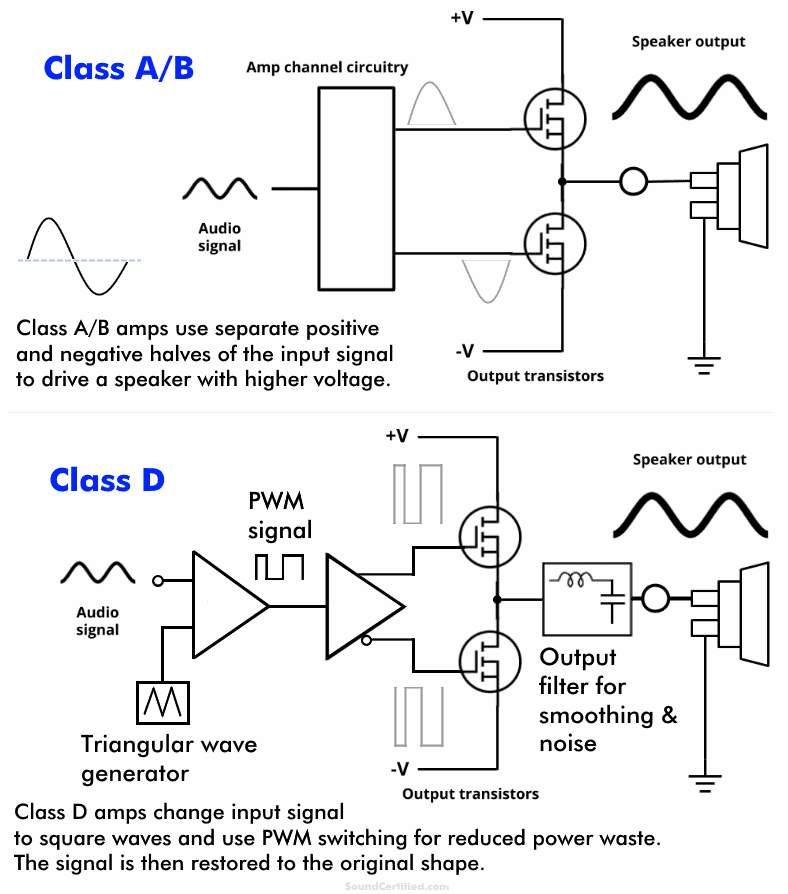
What Does A Car Amplifier Do The Only Guide You Need

Amplifier Classes And The Classification Of Amplifiers
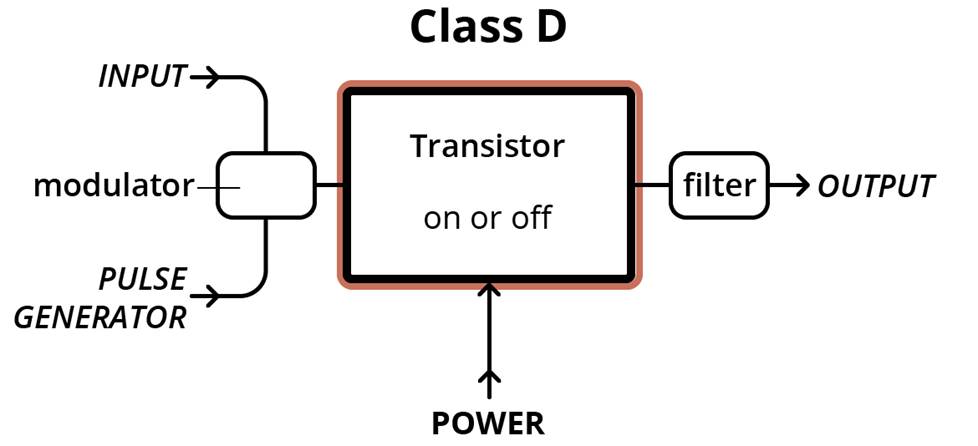
Which Amplifier Class Is The Best How Class D Amplifier Technology Differs From Class A And Ab

What Are The Different Types Of Audio Amplifier Classes Audioholics

Amplifier Classes And The Classification Of Amplifiers

Amplifier Classes And The Classification Of Amplifiers
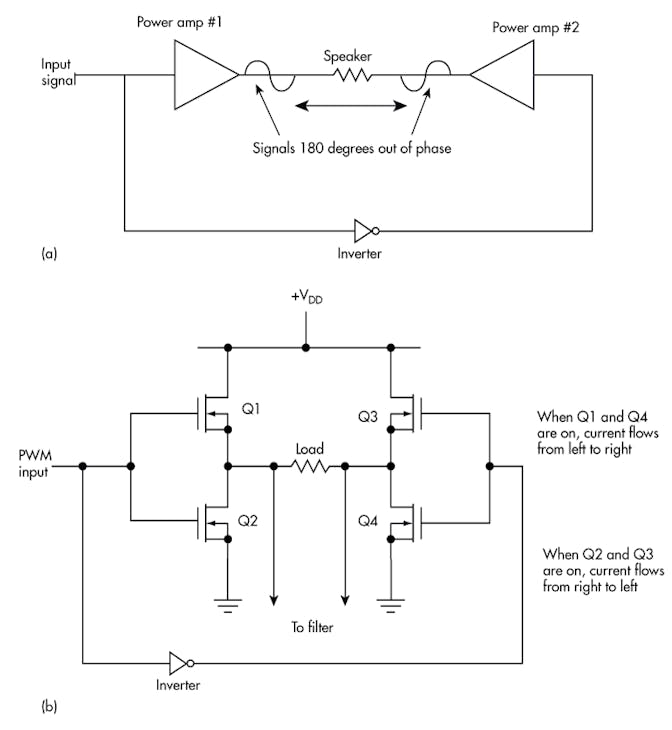
Transitioning From Class Ab To Class D In Automotive Audio Systems Electronic Design

Class D Audio Amplifiers What Why And How Analog Devices
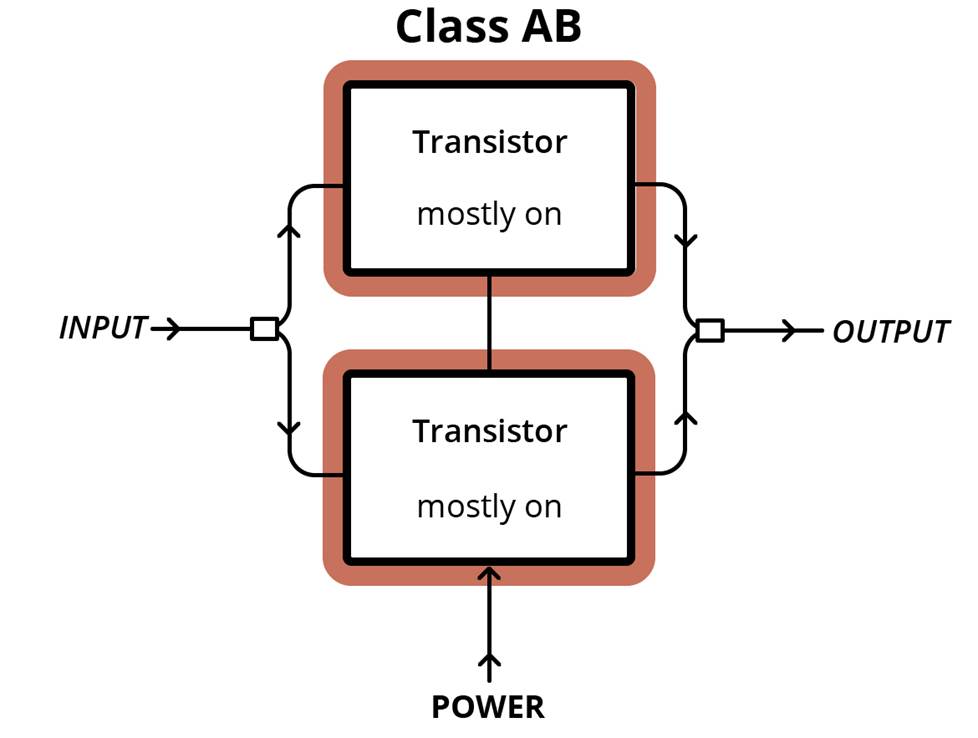
Which Amplifier Class Is The Best How Class D Amplifier Technology Differs From Class A And Ab

Classes Of Power Amplifiers Class A B Ab C D Amplifiers Explained

What Are The Different Types Of Audio Amplifier Classes Audioholics

